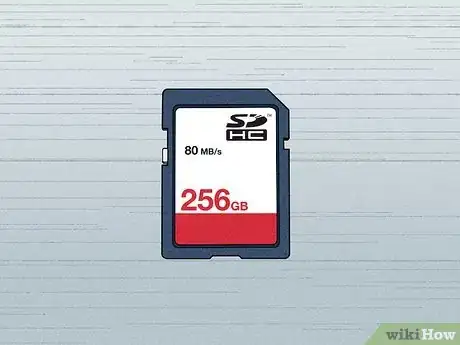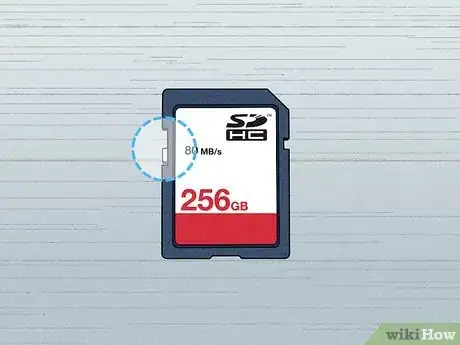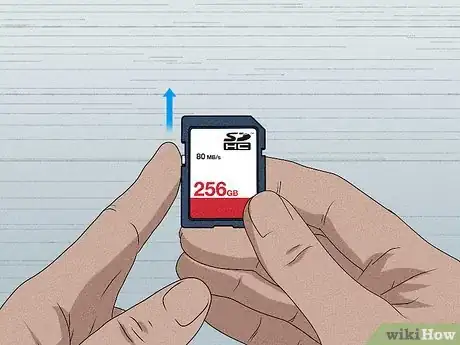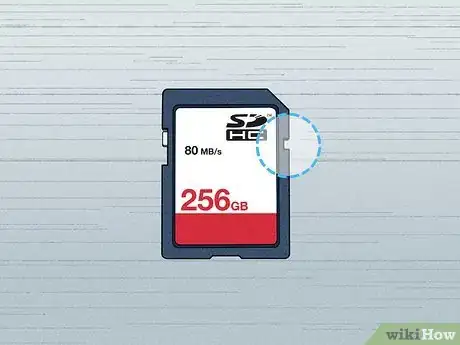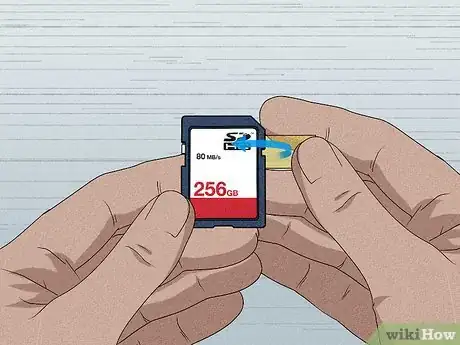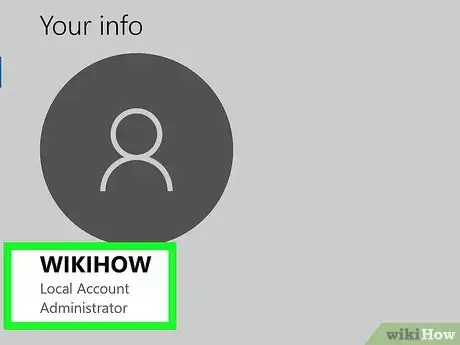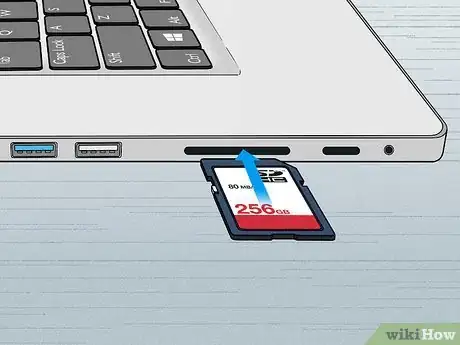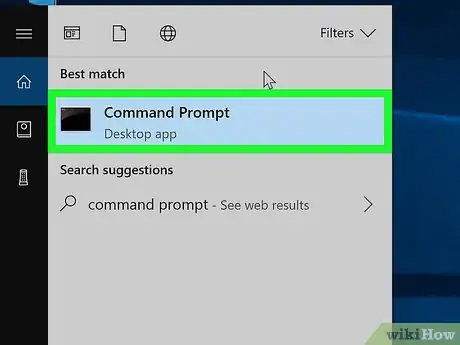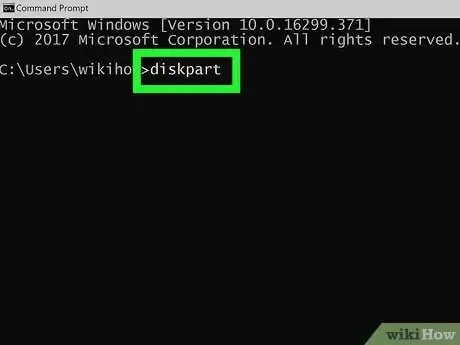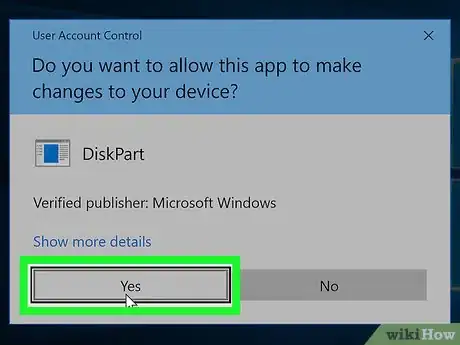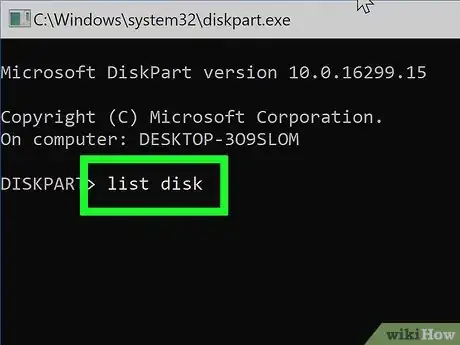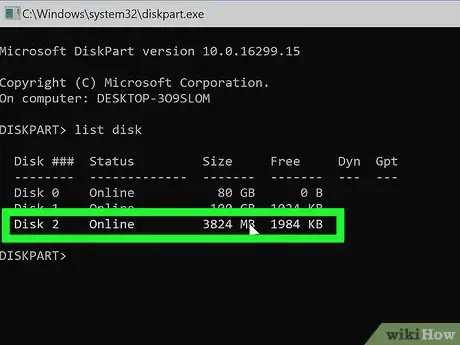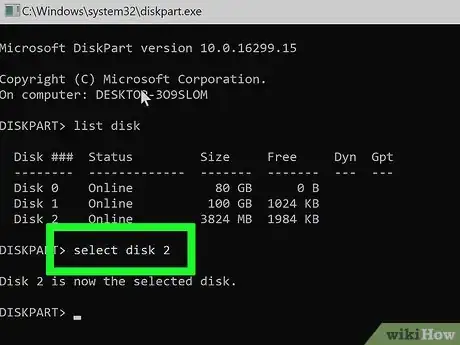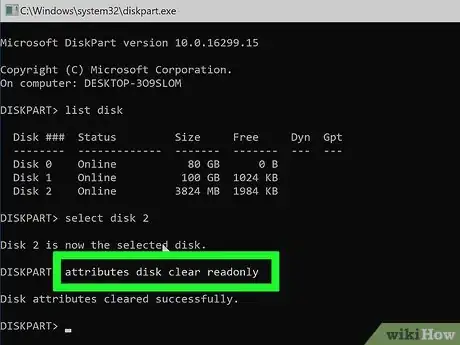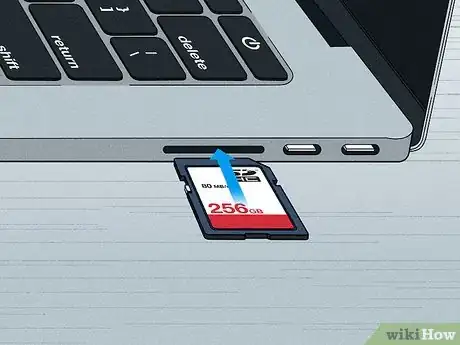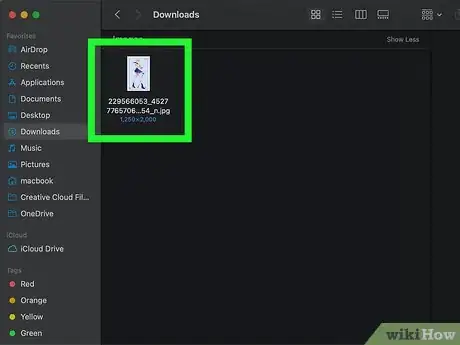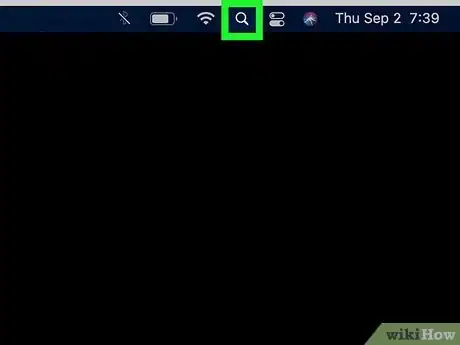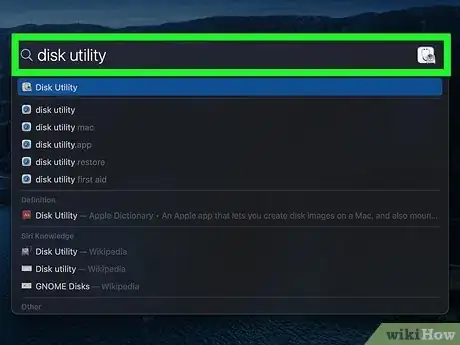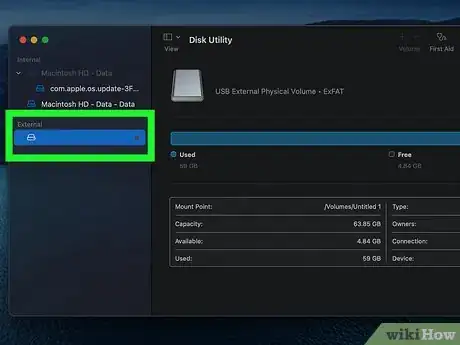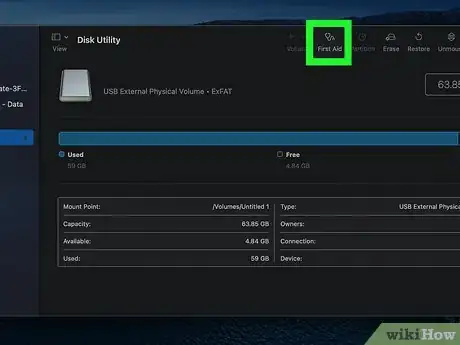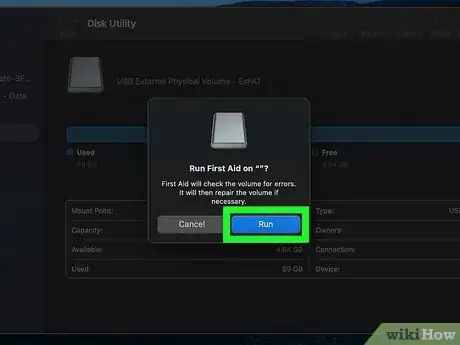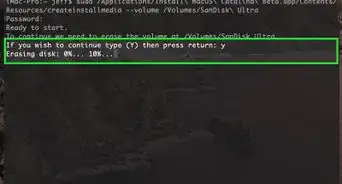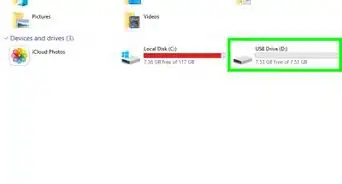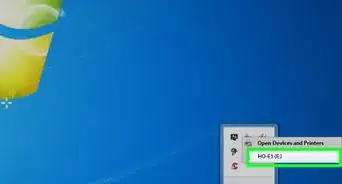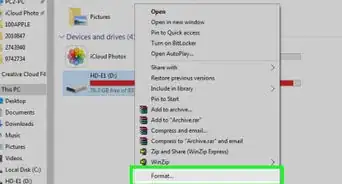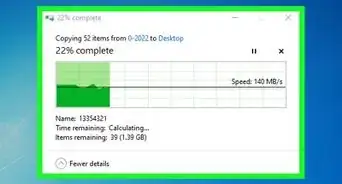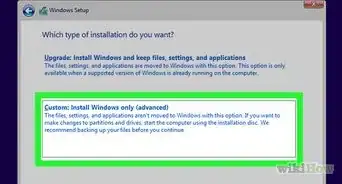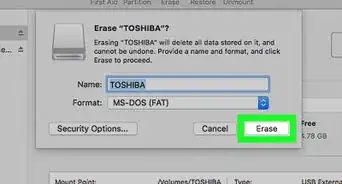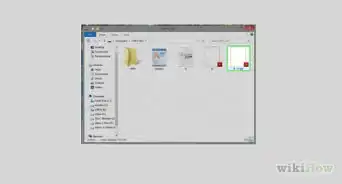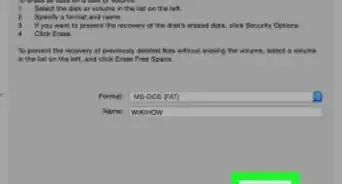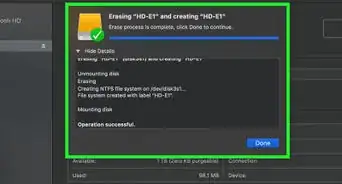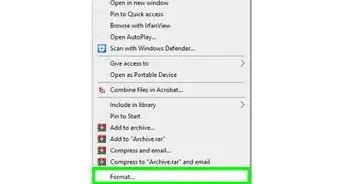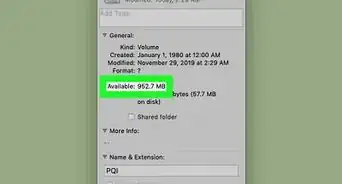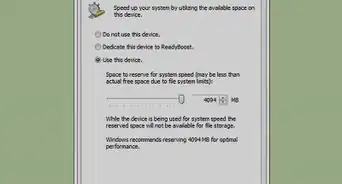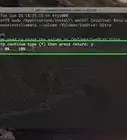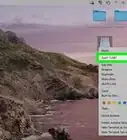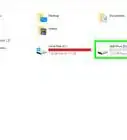This article was co-authored by wikiHow staff writer, Nicole Levine, MFA. Nicole Levine is a Technology Writer and Editor for wikiHow. She has more than 20 years of experience creating technical documentation and leading support teams at major web hosting and software companies. Nicole also holds an MFA in Creative Writing from Portland State University and teaches composition, fiction-writing, and zine-making at various institutions.
The wikiHow Tech Team also followed the article's instructions and verified that they work.
This article has been viewed 2,803,156 times.
Learn more...
This wikiHow teaches you how to remove the "Read Only" status from an SD card so that you can place files on it. Virtually all SD cards have physical locks that can be toggled to enable (or disable) write protection. If your SD card is locked down due to digital write protection, you can use a Windows or Mac computer to remove the write protection.
Things You Should Know
- Check if your SD card is physically locked, unlocked, or locked by tape or debris.
- Use Command Prompt on Windows to unlock your SD card.
- Use First Aid on your Mac to fix any issues that might be plaguing your SD card.
Steps
Removing Physical Write Protection
-
1Position the SD card. Place the SD card on a flat surface with the label facing upward. This helps you find the lock switch for the card.
- If you are using a micro- or mini-SD card, insert it into an SD card adapter, and place the adapter label-up on a flat surface.
-
2Locate the lock switch. It should be on the upper-left side of the SD card.
- The lock switch is typically a small white or silver tab that protrudes from the left side of the SD card.
Advertisement -
3Slide the switch upward to unlock the card. If the lock switch is down, sliding it upward will unlock the card, allowing you to save and edit data.[1]
- If the switch was already in the unlocked position or this didn't resolve your issue, continue to the next step.
-
4Find the notch on the opposite side of the card. Your SD card should also have a smaller notch on the right edge. This notch can prevent certain card readers and other devices from writing to the card, even when the card is unlocked.
-
5Cover the right notch with a small piece of transparent tape. The tape you use to cover the notch should be just large enough to cover it—don't use too much tape, or else it could prevent the SD card from seating properly.[2]
- If the unlock switch keeps falling down, you can use another small piece of tape to keep it in the unlocked position.
- If you still can't write to the card after covering the notch with tape, try inserting it into a computer and checking for digital write protection. Read on to learn how on Windows and macOS.
Removing Digital Write Protection on Windows
-
1Make sure that you're using an administrator account. You'll need to be on an administrator account in order to open the Disk Partition tool, which is what you'll use to remove the write protection from your SD card.
-
2Plug the SD card into your computer. If your computer has an SD card reader, the card should slide label-up and gold connectors-first into the reader.
- If your PC doesn't have a card reader, you'll need a USB SD card adapter to do this.
-
3Open the Command Prompt. Press Windows key + S to activate the Windows search bar, and then type command prompt. Click Command Prompt in the search results to open it now.
-
4Type diskpart and press ↵ Enter. You'll be asked if you want to allow the app to make changes.
-
5Click Yes to continue. The prompt in the Command Prompt window should now say "DISKPART."
-
6Type list disk and press ↵ Enter. This displays a list disks connected to your PC.
-
7Determine your SD card's number. You can find your SD card by looking for a number of megabytes or gigabytes that correlates with your SD card's storage in the "Size" column; the number to the right of "Disk" on the far-left side of this value is your SD card's number.
- For example, if you see that the storage size for Disk 3 mirrors your SD card's remaining space, your SD card's number is "3".
- The top disk (Disk 0) will always be your computer's built-in hard drive.
-
8Select your SD card. Type in select disk number where "number" is replaced by the SD card's number, then press Enter. This tells Disk Partition to apply the next command to your SD card.
- For example, if your SD card is labeled as "Disk 3" in the list of computer disks, you'd type select disk 3 here.
-
9Type attributes disk clear readonly and press ↵ Enter. You should see a line of text that reads "Disk attributes cleared successfully" appear in the window below your cursor, signifying that your SD card is no longer write-protected.
Removing Digital Write Protection on a Mac
-
1Plug your SD card into your Mac. Attach your SD card adapter to one of your Mac's USB or USB-C ports, then plug the SD card itself into the adapter.
- If you have an older Mac, your Mac may have an SD card slot on its right side. If so, you can plug the SD card label side-up and gold connectors-first into the slot.
-
2Look for a read-only file. In some cases, having one read-only file can cause the whole SD card to lock down until the file is switched to "Read and Write" mode. You can check a file's status by clicking it, clicking File, clicking Get Info, and looking at the "Sharing & Permissions" heading.
- If your file is read-only, change it to "Read and Write" status to see if that removes your SD card's digital write protection.
-
3
-
4Open Disk Utility. Type disk utility into the search bar, then double-click Disk Utility in the search results.
-
5Select your SD card. Click your SD card's name in the upper-left side of the Disk Utility window.
-
6Click First Aid. It's a tab near the top of the Disk Utility window. Doing so will prompt First Aid to begin running on your SD card.
- If prompted, follow any on-screen instructions while First Aid runs.
-
7Allow First Aid to scan the SD card. If your SD card is locked down due to an error, the error will be fixed by First Aid.
Community Q&A
-
QuestionWhy does my SD card tell me it is write protected if it is set to unlocked?
 Community AnswerYour SD card must have been encrypted using a password on a mobile device or software.
Community AnswerYour SD card must have been encrypted using a password on a mobile device or software. -
QuestionI tried method two and the SD card wasn't showing up on my computer management screen. There's no physical lock, so without an adapter, I can't use method one either. What else can I try?
 Community AnswerTry the following: 1. Click Start > type “regedit” and open “Registry Editor”. 2. Now follow the below path after opening registry editor :- HKEY_LOCAL_MACHINE/SYSTEM/CurrentControlSet/Control/StorageDevicePolicies. 3. Now you will see “Write Protection” option. Double click on that and set the value data to ‘0’. After setting the value data to ‘0’ again try copying or formatting your sd card. After performing the above step you are still not able to format your sd card then continue to next step. Open Command Prompt and type diskpart and press Enter key. After opening diskpart type “list disk” and again press Enter button. Now type “select disk 1”.
Community AnswerTry the following: 1. Click Start > type “regedit” and open “Registry Editor”. 2. Now follow the below path after opening registry editor :- HKEY_LOCAL_MACHINE/SYSTEM/CurrentControlSet/Control/StorageDevicePolicies. 3. Now you will see “Write Protection” option. Double click on that and set the value data to ‘0’. After setting the value data to ‘0’ again try copying or formatting your sd card. After performing the above step you are still not able to format your sd card then continue to next step. Open Command Prompt and type diskpart and press Enter key. After opening diskpart type “list disk” and again press Enter button. Now type “select disk 1”. -
QuestionHow can you tell if it is working?
 Community AnswerTry to recycle a photo. If it works, write protection is off. If you can't delete a picture, write protection is on. After write protection is off, take the photo from the recycle bin and put it back in the SD card. Keep in mind this was only tested on Windows.
Community AnswerTry to recycle a photo. If it works, write protection is off. If you can't delete a picture, write protection is on. After write protection is off, take the photo from the recycle bin and put it back in the SD card. Keep in mind this was only tested on Windows.
Warnings
- In some cases, the lock switch on your SD card may become loose and slide into the locked position when you insert the card into a computer or device. If this happens, you may need to either glue the switch in place or replace the SD card.⧼thumbs_response⧽
References
About This Article
1. Place the SD card label-side-up on a flat surface.
2. Locate the lock switch.
3. Slide the lock switch toward the gold connectors at the bottom of the SD card.
